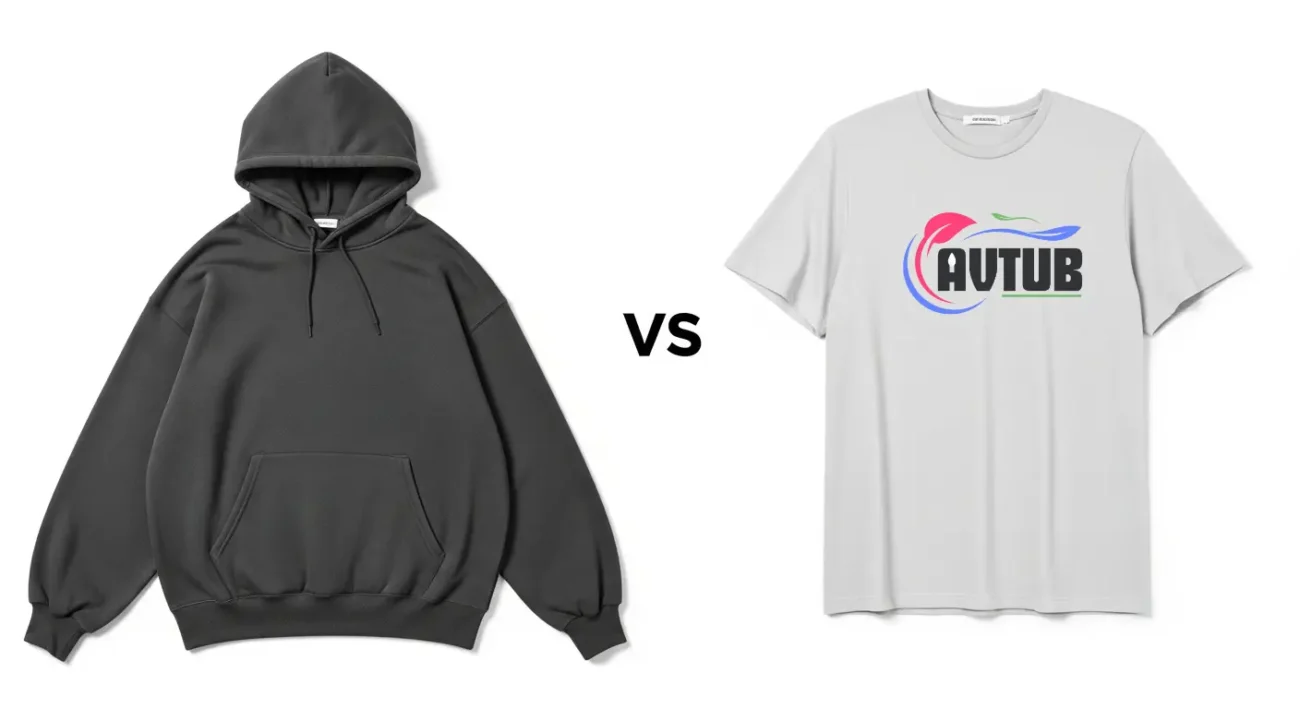Imagine slipping into a hoodie so comfy and a T shirt so soft that sometimes you wonder whether you’re wearing pajamas but everyone else thinks you nailed “effortless style” That’s the power of well chosen “essentials” fabrics. I’ll walk you through everything about men’s essentials hoodie fabric T shirts the fabrics, the weights, the fits, how to care for them, and tips to choose pieces that last.
What “Essentials” Means
Before diving into fabric jargon, let’s define “essentials hoodie / essentials T shirt.” In many fashion circles, “essentials” refers to wardrobe fundamentals clean cuts, neutral colors, no crazy prints, reliable fabrics. Brands like Fear of God ESSENTIALS have popularized a minimalist aesthetic built on quality basics. Some blogs focus just on styling or branding. My aim is to go deeper: materials, construction, value.
Choosing the Right Fabric for Essentials Hoodies & T Shirts
Understand the Fabric Basics
- Cotton is soft, breathable, natural. But pure cotton (especially light kinds) can wrinkle, stretch, and lose shape.
- Polyester (or synthetic blends) adds strength, shape retention, wrinkle resistance, and durability.
- Blends (cotton + polyester or cotton + rayon, etc.) often offer the best of both worlds: comfort and structure.
Ideal Blend & Weight (GSM) for Hoodies
To get that premium feel, many “essentials” brand hoodies use a heavy cotton-poly fleece, often in the 380–480 GSM range. That’s thick enough to feel structured and warm, but not so bulky it’s unwearable. In one sourcing typical specs are 80% cotton / 20% polyester fleece with 380-480 GSM. That balance keeps softness, stretch, and shape.
Why GSM matters:
- Lower GSM (200–300): light, breezy, more like a sweatshirt.
- 380–480 GSM: ideal mid/heavyweight fleece structured, warm, holds shape, less see-through.
- Over 480: very thick and heavy, best for cold climates or layering.
For essentials T shirts, you usually want 160 220 GSM for daily wear. Heavier tees (e.g. 240 GSM) feel premium but may be stiff.
Loopback vs Brushed Fleece
- Loopback fleece has smooth outer knit and inside loops (unbrushed). It’s lighter, more breathable good for lighter hoodies.
- Brushed fleece (inside is brushed) is softer, warmer, plush. Better for colder weather or higher-end hoodies.
Most premium essentials hoodies use a brushed inner fleece layer for comfort.
Finishing Pre-Shrinking & Treatment
High end pieces often undergo pre-shrinking, garment washing, or enzyme washes to minimize future shrinkage and keep softness. Also, anti-pilling finishes help reduce fuzzing over time.
Hoodies vs T Shirts: What’s Different

Fabric & Construction Differences
- A hoodie needs heavier weight to support structure, seams, the hood itself, ribbing on cuffs/hem.
- A T shirt is simpler: lighter weight, single jersey knit, fewer seams, simpler hems.
Hence, you can’t treat hoodie fabric like T shirt fabric. The heavier GSM and reinforcement is essential for hoodies.
Fit & Cut Differences
Hoodies often use boxier or oversized cuts, thicker ribbing, drop shoulders (intentionally).
T shirts usually aim for a closer silhouette (though “essentials” style may adopt a relaxed/oversized cut).
Use Cases
- Hoodies: layering, cooler weather, casual outerwear.
- T shirts: everyday wear, under layers, warmer climates.
Fit & Sizing How Essentials Pieces Should Fit
Oversized vs Regular Fit
Many “essentials” hoodies and tees are designed to run oversized / relaxed. That’s part of the aesthetic. Several sources confirm that many essentials brand garments run large and recommend sizing down.
Consider Your Body Type & Preference
- If you’re tall, you might prefer slightly longer drops.
- If your arms are muscular, check sleeve width.
- If you prefer fitted over oversized, size down (but avoid making movement impossible).
My guide helps you think about your goals fit vs comfort vs style not blindly follow “brand says size X.”
Design, Details & Construction
Ribbing, Cuffs, Seams & Hood Design
Premium essentials hoodies use thicker ribbing at cuffs and hem (often the same fleece weight but tighter knit). This helps avoid saggy cuffs over time.
Look for flatlock or reinforced seams (less friction, stronger over time).
Hoods are often double-layered for structure, especially in premium designs.
Pockets, Drawstrings & Branding
- Kangaroo pocket is classic; should be lined properly to avoid sagging.
- Drawstrings: flat cotton or rope style; metal tips (aglets) add durability.
- Branding & labels: subtle branding is common in “essentials style”. Also, look for good quality wash tags, heat-pressed brand tags, or woven labels.
Color & Dye Quality
Neutrals like black, white, heather grey, oatmeal, earthy tones are staples. The dye method matters reactive dyes or pigment dyes produce different hand feel. A good “essentials” brand uses reliable dyeing to avoid fading.
Care, Washing & Longevity
This is where many blogs just list a few tips. I’ll go deeper.
Basic Care Rules
- Wash inside-out with cold water (to protect surface).
- Use mild detergent, avoid bleach.
- Use gentle cycles.
- Hang-dry or tumble dry very low (high heat ruins shape).
Advanced Tips
- Use mesh laundry bags for T shirts to reduce friction.
- For heavy hoodies, wash separately or with heavy items to avoid stretching lighter fabrics.
- Avoid over-filling your washer crowded loads strain seams.
- Use wool dryer balls or towels to help fluff up fleece in dryer.
- Spot-clean stains instead of full wash when possible.
Maintenance
- After 10 20 wears, flip the garment inside-out and wash to preserve outer surface.
- Avoid ironing directly on logos or prints; low-heat ironing under a cloth if needed.
- Repair small holes early to avoid bigger damage.
Final Thoughts
Choosing the right men’s essentials hoodie fabric T shirt isn’t just about style it’s about comfort, longevity, and confidence. When you understand fabrics, fits, and care, you can build a wardrobe that looks good and lasts longer. A well-made hoodie or tee feels like a second skin soft, durable, and effortlessly stylish. So, invest in quality, learn how to care for it, and you’ll never have to think twice about what to wear. Essentials pieces aren’t just clothing they’re the reliable foundation of every man’s everyday look.


